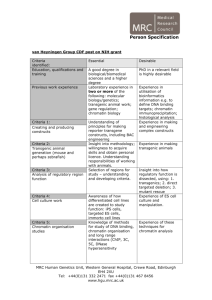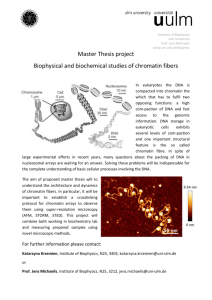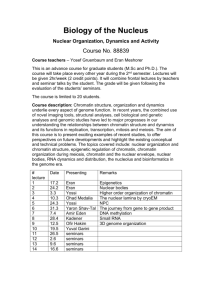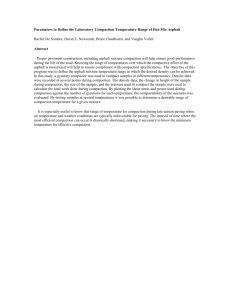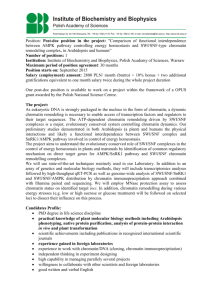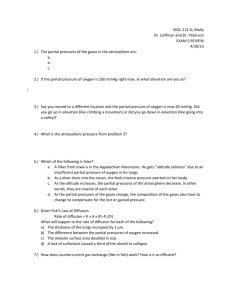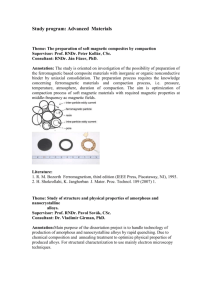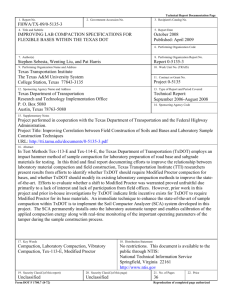Quantitative Analysis of Chromatin Higher-Order
advertisement
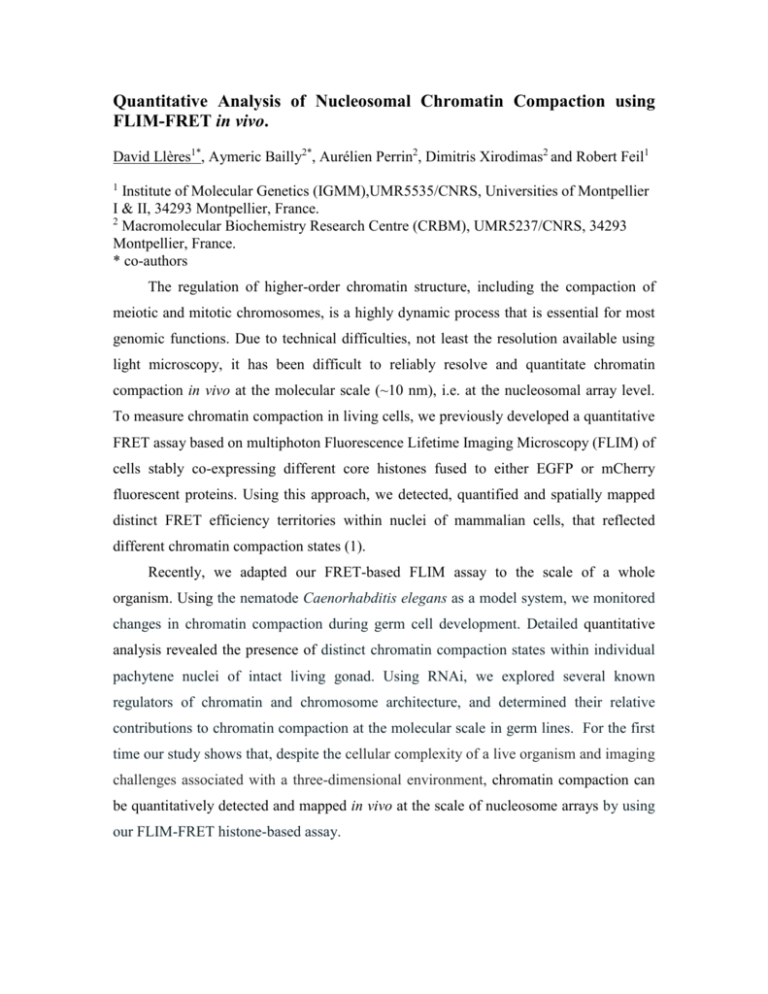
Quantitative Analysis of Nucleosomal Chromatin Compaction using FLIM-FRET in vivo. David Llères1*, Aymeric Bailly2*, Aurélien Perrin2, Dimitris Xirodimas2 and Robert Feil1 1 Institute of Molecular Genetics (IGMM),UMR5535/CNRS, Universities of Montpellier I & II, 34293 Montpellier, France. 2 Macromolecular Biochemistry Research Centre (CRBM), UMR5237/CNRS, 34293 Montpellier, France. * co-authors The regulation of higher-order chromatin structure, including the compaction of meiotic and mitotic chromosomes, is a highly dynamic process that is essential for most genomic functions. Due to technical difficulties, not least the resolution available using light microscopy, it has been difficult to reliably resolve and quantitate chromatin compaction in vivo at the molecular scale (~10 nm), i.e. at the nucleosomal array level. To measure chromatin compaction in living cells, we previously developed a quantitative FRET assay based on multiphoton Fluorescence Lifetime Imaging Microscopy (FLIM) of cells stably co-expressing different core histones fused to either EGFP or mCherry fluorescent proteins. Using this approach, we detected, quantified and spatially mapped distinct FRET efficiency territories within nuclei of mammalian cells, that reflected different chromatin compaction states (1). Recently, we adapted our FRET-based FLIM assay to the scale of a whole organism. Using the nematode Caenorhabditis elegans as a model system, we monitored changes in chromatin compaction during germ cell development. Detailed quantitative analysis revealed the presence of distinct chromatin compaction states within individual pachytene nuclei of intact living gonad. Using RNAi, we explored several known regulators of chromatin and chromosome architecture, and determined their relative contributions to chromatin compaction at the molecular scale in germ lines. For the first time our study shows that, despite the cellular complexity of a live organism and imaging challenges associated with a three-dimensional environment, chromatin compaction can be quantitatively detected and mapped in vivo at the scale of nucleosome arrays by using our FLIM-FRET histone-based assay. 1. Llères D, James J, Norman DG, Swift S, Lamond AI. (2009). Quantitative Analysis of Chromatin Compaction in living cells using FLIM-FRET. J Cell Biol, 16, 481496.

